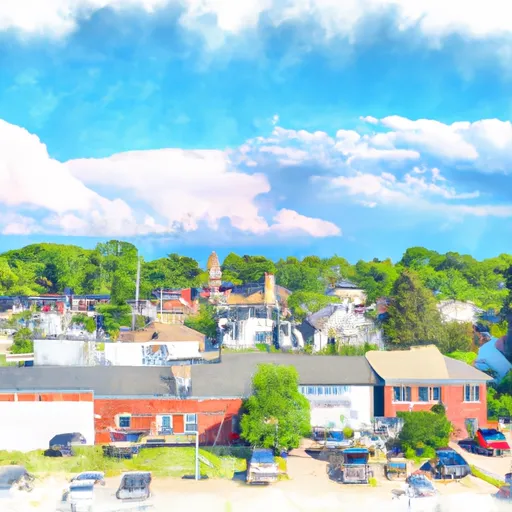-
 Snoflo Premium
Snoflo Premium
Get unlimited access to all our content
With no Ad interruptions! - Start Your Free Trial Login with existing account
Vernon
Eden Index
Climate
7.4
•
Recreation
3.5
•
Community
2.0
•
Safeguard
4.7/10

Vernon, located in Michigan, offers a pleasant climate with distinct seasons throughout the year. Summers are typically warm and humid, with average temperatures ranging from the high 70s to low 80s Fahrenheit. Winters are cold, with temperatures often dropping below freezing and moderate snowfall. Spring and fall bring milder weather, making them ideal for outdoor activities.
The hydrology constituents in Vernon are diverse, with numerous lakes and rivers dotting the landscape. The region is home to several inland lakes, including Vernon Lake, Silver Lake, and Lobdell Lake, offering opportunities for fishing, boating, and swimming. The Shiawassee River also flows through the area, providing additional water-based activities such as kayaking and canoeing.
Outdoor recreation enthusiasts have plenty of options in Vernon. The area has several parks and trails, including the Shiawassee State Game Area and the Shiawassee Rail Trail, offering opportunities for hiking, biking, and bird-watching. In the winter, residents and visitors can enjoy activities like snowmobiling and cross-country skiing. With its pleasant climate and diverse hydrology constituents, Vernon provides a welcoming environment for outdoor enthusiasts to explore nature and engage in recreational activities year-round.
What is the Eden Index?
The Snoflo Eden Index serves as a comprehensive rating system for regions, evaluating their desirability through a holistic assessment of climate health, outdoor recreation opportunities, and natural disaster risk, acknowledging the profound impact of these factors on livability and well-being.
Climate Health Indicator (CHI): 7.4
Vernon receives approximately
817mm of rain per year,
with humidity levels near 82%
and air temperatures averaging around
9°C.
Vernon has a plant hardyness factor of
6, meaning
plants and agriculture in this region thrive during a short period during spring and early summer. Most
plants will die off during the colder winter months.
By considering the ideal temperature range, reliable water supplies, clean air, and stable seasonal rain or snowpacks, the Climate Health Indicator (CHI) underscores the significance of a healthy climate as the foundation for quality living.
A healthy climate is paramount for ensuring a high quality of life and livability in a region, fostering both physical well-being and environmental harmony. This can be characterized by ideal temperatures, reliable access to water supplies, clean air, and consistent seasonal rain or snowpacks.
Weather Forecast
Streamflow Conditions
Saginaw
Area Rivers
Saginaw
Snowpack Depths
Saginaw
Reservoir Storage Capacity
Saginaw
Groundwater Levels
Recreational Opportunity Index (ROI): 3.5
The Recreational Opportunity Index (ROI) recognizes the value of outdoor recreational options, such as parks, hiking trails, camping sites, and fishing spots, while acknowledging that climate plays a pivotal role in ensuring the comfort and consistency of these experiences.
Access to outdoor recreational opportunities, encompassing activities such as parks, hiking, camping, and fishing, is crucial for overall well-being, and the climate plays a pivotal role in enabling and enhancing these experiences, ensuring that individuals can engage in nature-based activities comfortably and consistently.
Camping Areas
| Campground | Campsites | Reservations | Toilets | Showers | Elevation |
|---|---|---|---|---|---|
| Appleton Lake - Brighton Rec Area | None | 888 ft | |||
| Sugarloaf Lake - Waterloo State Rec Area | None | 961 ft | |||
| Bishop Lake - Brighton Rec Area | None | 901 ft | |||
| Pinckney State Rec Area | 235 | 907 ft | |||
| W. J. Hayes State Park | 185 | 1,001 ft | |||
| Green Lake - Waterloo State Rec Area | None | 959 ft | |||
| Portage Lake - Waterloo State Rec Area | None | 977 ft | |||
| Mary Jane Thurston State Park | 35 | 644 ft |
Nearby Ski Areas
Catastrophe Safeguard Index (CSI):
The Catastrophe Safeguard Index (CSI) recognizes that natural disaster risk, encompassing floods, fires, hurricanes, and tornadoes, can drastically affect safety and the overall appeal of an area.
The level of natural disaster risk in a region significantly affects safety and the overall livability, with climate change amplifying these risks by potentially increasing the frequency and intensity of events like floods, fires, hurricanes, and tornadoes, thereby posing substantial challenges to community resilience and well-being.
Community Resilience Indicator (CRI): 2.0
The Community Resilience Indicator (CRI) recognizes that education, healthcare, and socioeconomics are crucial to the well-being of a region. The CRI acknowledges the profound impact of these elements on residents' overall quality of life. By evaluating educational resources, healthcare accessibility, and economic inclusivity, the index captures the essential aspects that contribute to a thriving community, fostering resident satisfaction, equity, and social cohesion.

